Discover 11 hidden attractions, cool sights, and unusual things to do in Stillwater (United States). Don't miss out on these must-see attractions: Stillwater Lift Bridge, Washington County Historic Courthouse, and St. Croix Boom Site. Also, be sure to include Warden's House Museum in your itinerary.
Below, you can find the list of the most amazing places you should visit in Stillwater (Minnesota).
Table of Contents
Stillwater Lift Bridge

Vertical-lift bridge in Stillwater, Minnesota. The Stillwater Bridge is a vertical-lift bridge crossing the St. Croix River between Stillwater, Minnesota, and Houlton, Wisconsin. It formerly connected Minnesota State Highway 36 and Wisconsin Highway 64. Around 18,000 vehicles crossed the bridge daily. The new St. Croix Crossing bridge crossing the St. Croix river valley to the south of Stillwater replaced its purpose, having opened to highway traffic on August 2, 2017, leaving the Stillwater Lift Bridge to be preserved and to be converted to bicycle/pedestrian use.
The bridge was listed on the National Register of Historic Places in 1989 for having state-level significance in the theme of engineering. It was nominated for being a rare surviving example of a vertical-lift highway bridge based on the designs pioneered by Waddell & Harrington. The Stillwater Lift Bridge was one of two bridges on the St. Croix River between the Interstate 94 bridge in Hudson, Wisconsin, and the U.S. Highway 8 bridge in Taylors Falls, Minnesota, providing a popular and useful alternative to those crossings. (The other bridge is the Highway 243 bridge at Osceola, Wisconsin.)
The bridge consists of seven fixed steel truss spans 1,050 feet (320 m) long in total, including a vertically lifting span 140 feet (43 m) long. It is 23 feet (7.0 m) wide, allowing one lane of traffic in each direction. The lifting span is a Waddell & Harrington type, one of six built in Minnesota and Wisconsin and one of three still remaining today. Built in 1931 to replace a swing bridge from 1910, it was the last bridge of this design to be built in the area. Minnesota and Wisconsin evenly split the $460,174 cost of the bridge.[1]
Address: Chestnut St E, 55082 Stillwater
Washington County Historic Courthouse
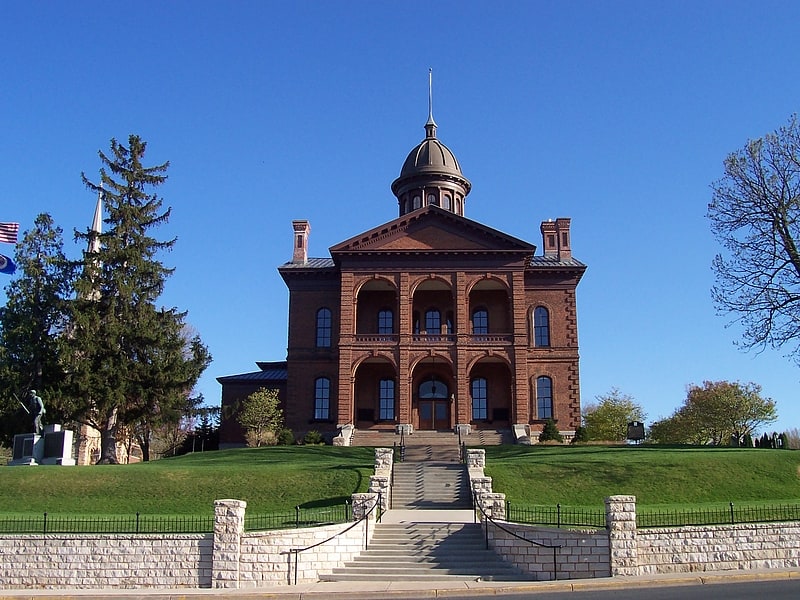
Courthouse. The historic Washington County Courthouse in Stillwater, Minnesota, United States, is one of the oldest standing courthouses in Minnesota. It was the center of Washington County government for over a century, from the building's completion in 1870 until 1975. It was listed on the National Register of Historic Places in 1971 for having state-level significance in the themes of architecture and government/politics. It was nominated as Minnesota's oldest functioning courthouse and one of its few surviving examples of monumental public architecture from the mid-19th century.[2]
Address: 101 Pine St W, 55082-4994 Stillwater
St. Croix Boom Site
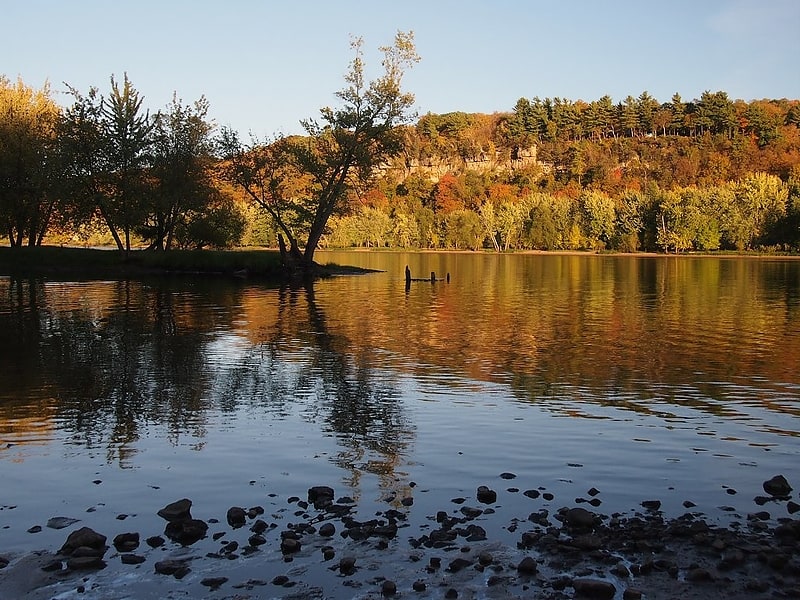
Picnic ground in Washington County, Minnesota. The St. Croix Boom Site is a historic and scenic wayside on the St. Croix River in Stillwater Township, Minnesota, United States. It commemorates the location of a critical log boom where, from 1856 to 1914, timber from upriver was sorted and stored before being dispatched to sawmills downstream. The site was developed as a roadside park along Minnesota State Highway 95 in the 1930s. In 1966 it was designated a National Historic Landmark for its national significance in the theme of industry. It was nominated for being the earliest, most important, and longest serving of the log storage and handling operations that supported Minnesota's major logging industry. Virtually no traces remain of the site's original buildings and structures.[3]
Address: St. Croix Trail North, 55082 Stillwater
Warden's House Museum
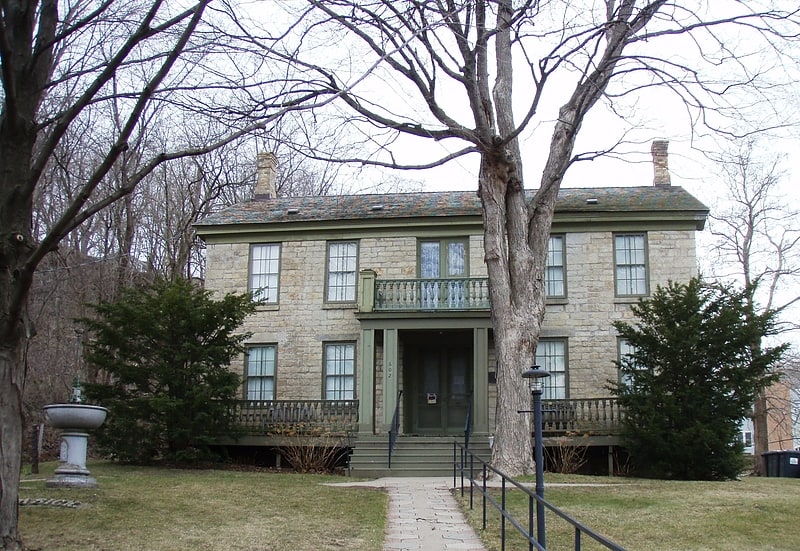
Museum in Stillwater, Minnesota. The Warden's House Museum is a historic house museum in Stillwater, Minnesota, United States. From 1853 to 1914 it was the official residence for the wardens of what began as the Minnesota Territorial Prison and became the Minnesota State Prison upon statehood in 1858. The Washington County Historical Society has operated the house since 1941, making it the second-oldest house museum in Minnesota. It was listed on the National Register of Historic Places in 1974 as the Minnesota Territorial/State Prison Warden's House for its state-level significance in the themes of architecture and social history. It was nominated for being the only surviving structure of the prison's Minnesota Territory period and the chief remnant of its statehood years.[4]
Address: 602 Main St N, 55082-4010 Stillwater
Johannes Erickson House
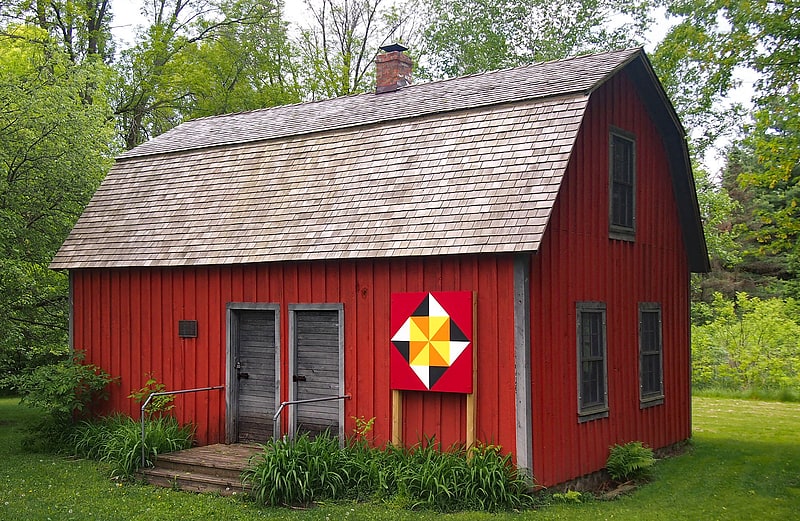
The Johannes Erickson House is a historic log cabin in Scandia, Minnesota, United States, built in 1868 with a gambrel roof, a distinctive tradition from southern Sweden. It was moved to its current site adjacent to the Hay Lake School in 1974 to be part of a small museum complex operated by the Washington County Historical Society. The Erickson House was listed on the National Register of Historic Places in 1976 for having local significance in the themes of architecture and exploration/settlement. It was nominated as a rare surviving example of a style brought to Minnesota by Swedish immigrants from Dalsland and Småland.[5]
Mortimer Webster House
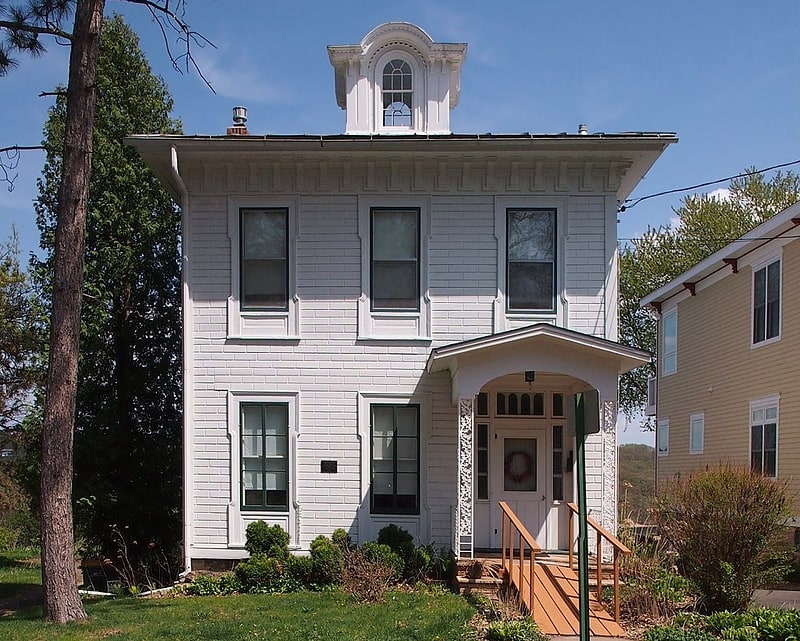
The Mortimer Webster House is a historic house in Stillwater, Minnesota, United States, constructed 1865–1866. It is listed on the National Register of Historic Places in 1982 for having local significance in the themes of architecture and commerce. It was nominated for being one of the best examples of Italianate architecture in Stillwater, and for its association with Mortimer Webster, one of the town's notable early entrepreneurs.[6]
Moritz Bergstein Shoddy Mill and Warehouse
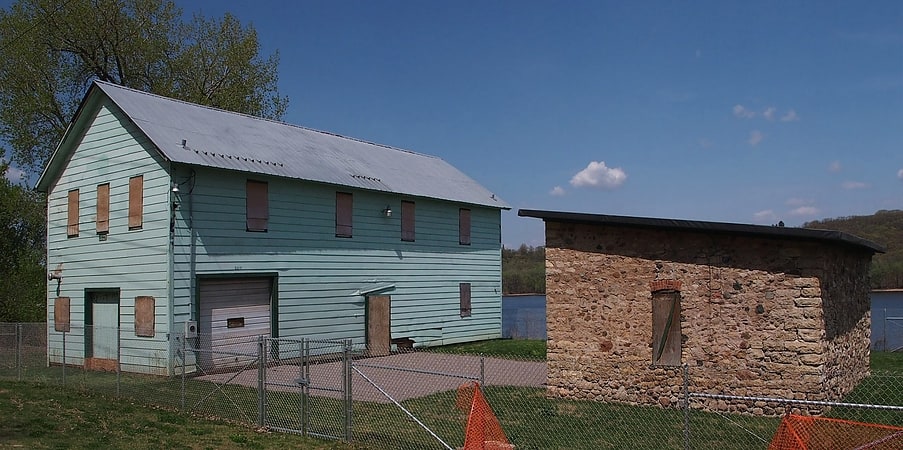
The Moritz Bergstein Shoddy Mill and Warehouse are two historic industrial buildings in Stillwater, Minnesota, United States, in which Jewish German immigrant Moritz Bergstein conducted a recycling business circa 1890 to 1910 providing materials for mattresses. They were originally built in Oak Park Heights, Minnesota, around 1890 and were moved to neighboring Stillwater in 2012 to make way for construction of the St. Croix Crossing bridge. The property was listed on the National Register of Historic Places in 2008 for having local significance in the themes of industry and social history. They were nominated as a rare surviving embodiment of Minnesota's early Jewish immigrants and their frequent participation in the waste materials trade.[7]
Stillwater Public Library

Historical place, Library
Address: 223 n. 4th st., 55082 Stillwater
Arcola Mills

Education center in Washington County, Minnesota. Arcola Mills is a historic house in the unincorporated community of Arcola, Minnesota, United States. Built in 1847, it is considered the third-oldest and largest all-wood-frame house still standing in Minnesota. It was the home of brothers Martin and John Mower, who established one of the first sawmills on the St. Croix River and the community around it. The house and the remnants of the nearby mill were listed on the National Register of Historic Places in 1980 as the John and Martin Mower House and Arcola Mill Site for having local significance in the themes of architecture, exploration/settlement, and industry. The property was nominated as an "excellent example" of Greek Revival architecture and for its association with the region's early settlement and lumber industry. The property now operates as a non-profit event and education center.[8]
William Sauntry House and Recreation Hall
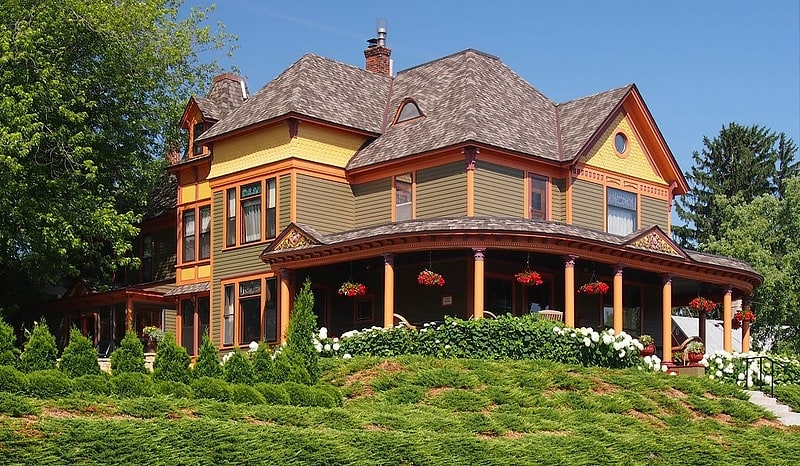
The William Sauntry House and Recreation Hall is a historic property in Stillwater, Minnesota, United States, consisting of a late-nineteenth-century house and a 1902 addition styled after a Moorish palace. It was listed on the National Register of Historic Places in 1982 for its local significance in the themes of architecture and industry. It was nominated for its association with prosperous local lumberman William Sauntry and for its fanciful recreation hall, one of Minnesota's best examples of a folly and a rare use of Moorish Revival architecture. Now in separate ownership, the recreation hall has been restored as a private home while the William Sauntry Mansion operates as a bed and breakfast.[9]
Ivory McKusick House

The Ivory McKusick House is a historic house in Stillwater, Minnesota, United States, completed in 1872 for Ivory McKusick. It was listed on the National Register of Historic Places in 1982 for having local significance in the themes of architecture and commerce. It was nominated as a striking example of Second Empire architecture in the region and for its associations with a notable family in early Stillwater. McKusick had built his wealth via the lumber industry and government contracts during the Civil War. His older brother John had helped establish the first sawmill in the vicinity in 1843, named and platted the community that grew around it after his hometown in Maine, and served as its first mayor.[10]